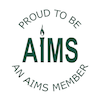By Emma Ashworth

Today, March 8th, is International Women’s Day, a day to celebrate the strength, power and, of course, history, of women. I want to share some history which affects every woman or birthing person who has a child: The history of hospital birth and home birth. How did we come to birth most of our babies in hospital, and is it the safest option?
Why did we start to give birth in hospitals?
Before the NHS was founded in 1948, most women gave birth at home with midwives that they already knew and had a relationship with. As the NHS found its feet, maternity was something of a forgotten entity, with no central recommendation as to how maternity care should be run. Care was passed between GPs, hospitals and some local authority run services such as maternity clinics, so in 1956 a report was commissioned by the Government with the aim of creating a coherent policy. The then Earl of Cranbrook, John David Gathorne-Hardy, was commissioned to chair the committee which was formed to create the report, despite having no previous connections with maternity or obstetrics.
The Cranbrook Report was published in 1959 and it stated that 70% of all births should occur in hospital, and that the other 30% should be safe enough to happen at home. The decision about who was able to birth in home or at hospital was to be made by the woman’s obstetrician. The obstetric community were not happy; they wanted far more women to be classed as ‘high risk’ and to not be permitted to have a home birth, which would be with midwives rather than doctors.
A few years later, in 1967, the Maternity and Midwifery Advisory Committee published its own report, named the ‘Peel Report’ after the group’s chair – John Peel – an obstetrician and gynaecologist and former President of The Royal College of Obstetricians and Gynaecologists (RCOG). The Peel Report recommended that every woman gave birth in hospital, claiming that this was safest for every woman and baby, although it provided no evidence to support this claim. This is not surprising as there was no such evidence (and still isn’t). It was also criticised for its lack of engagement with women and families, who were not consulted at all about what was important to them.
One of the Peel Report’s leading critics was Archie Cochrane, a Scottish doctor who spent his life advocating for evidence based medical care, and who pointed out that there simply wasn’t any evidence that increased hospital rates lowered perinatal mortality rates. Cochrane’s dedication to evidence based medical care led to the creation of the Cochrane Library, which contains the Cochrane Reviews1, summaries of evidence vital to medicine and maternity care now, and a useful resource for us all.
Despite the criticism of the Peel Report, it led to a sea-change in maternity care, with the NHS ensuring that there was provision in hospital for every woman to birth there, and hospital birth became the norm. Before the 1940s, almost every woman gave birth at home but following the Peel Report, by the early 1970s almost all births occurred in hospital.
While all this was happening, women and families were campaigning to be heard, and to have their own choices and feeling considered within maternity policies. In 1960, Sally Willington founded ‘The Society for the Prevention of Cruelty to Pregnant Women’, subsequently renamed as ‘The Association for Improvements in the Maternity Services’, or ‘AIMS’. Together with other similar organisations such as the NCT, AIMS fought for, and won, many rights for women during birth including the cessation of many non-evidence based procedures which caused harm, such as routine episiotomies. Over time, and in huge part thanks to the continued work of organisations such as the NCT and AIMS, childbirth headed higher up the political agenda.
Ground breaking research2 in the 1970s by Marjorie Tew (republished in Marjorie’s version of the AIMS book, “Safety in Childbirth”), became the first widely accepted data on the safety of homebirth. It showed the perinatal mortality rates were significantly lower in all risk groups where babies were born at home rather than in hospital!
Many other people and organisations continued to campaign for maternity care which was women-centred, and recognised the need to support physiological birth, which is much easier to do in a woman or person’s own home. Eventually this led in 1991 to the Winterton Report which became part of Changing Childbirth3 in 1993, a Governmental review of the NHS’ maternity services with the same level of influence as the Peel and Cranbrook reports. But this time, for the first time, rather than the only influencers being obstetricians, women’s and midwives’ voices were an integral part of the review. The Winterton Report accepted that there was no evidence that birth in hospital was safer than at home and, for the first time, it also stated that women should be able to make their own choices and decisions about maternity care.
This report was nothing short of revolutionary. At the time, the 1990s, the Medical Defence Union (MDU) advised doctors that women were giving implied consent to any treatment, just by walking through the doors of the hospital! Finally, women’s own decisions were being recognised as the only ones that mattered – at least in theory.
Unfortunately, while the previous obstetrician and Earl-led reports strongly influenced the NHS’ service provision, The Winterton Report, and Changing Childbirth which Winterton became part of, was unable to significantly impact on home birth rates. Hospital birth had been thought to be safest place of birth for two generations by this point, and challenging that was an uphill battle. However, women’s rights in birth did really begin to improve thanks to Changing Childbirth, and the focus on understanding and implementing physiological birth support also turned a corner for the better. More women and people began to move into their power, having been influenced by authors such as Sheila Kitzinger, Ina May Gaskin and Dick Grantly-Reed. Doula support, ever-present throughout humanity in one form or another, started to become an established role in British culture. Things were changing.
In 2010, Anna Ternovszky brought a case to the European Court of Human Rights (ECHR)4 claiming that her home country, Hungary, was denying her legal rights to birth at home – at the time Hungary had a country-wide ban on home birth. She won. This meant that home birth became a legal right for all women and people across the European Union and beyond – to every country that came under the jurisdiction of the court. This included, and still includes, the UK, even after Brexit, as we still come under the jurisdiction of the ECHR, at least for now.
Just a year later, the largest ever evaluation of the safety of home birth was published. Often referred to by its shortened name, the ‘Birthplace Study’5, or just ‘Birthplace’ it clearly shows the safety of home birth. It even showed the impact of planning a home birth on reducing outcomes such as caesareans, post partum haemorrhage and births assisted with forceps, with dramatically lowered rates of all of these outcomes for women who had planned to birth at home even if they eventually had their baby in hospital.
Birthplace was very influential on the developments of dedicated home birth teams across the UK, and is frequently used as evidence to support the importance of a strong and well resourced home birth service, as well as being used by women and people to help them to make their own decisions about where they plan to give birth.
Despite all of these positive changes, home birth rates remain stubbornly low. Perhaps if more people knew the history of how birth became a hospital based event they would be more confident in making the choice that’s right for them, whether that’s hospital, a midwife led unit, or staying right at home.
References
- Cochrane Library: https://www.cochranelibrary.com/
- Marjorie Tew’s data on the safety of home birth: https://www.aims.org.uk/journal/item/the-safety-of-hospital-birth-the-myth-versus-the-reality
- DoH (1993) Changing Childbirth: Report of the Expert Maternity Group Pt.1. Stationery Office Books. London.
- Ternovszky V Hungary: https://hudoc.echr.coe.int/eng#{%22itemid%22:[%22001-102254%22]}
- The Birthplace Cohort Study: https://www.npeu.ox.ac.uk/birthplace/results#main
Emma Ashworth is a doula and breastfeeding counsellor, author and freelance writer/copywriter on topics including pregnancy and birth. She is the author of The AIMS Guide to Your Rights in Pregnancy and Birth.
– Facebook: https://www.facebook.com/emmaashworthdoula
– Nurturing Birth Directory listing






